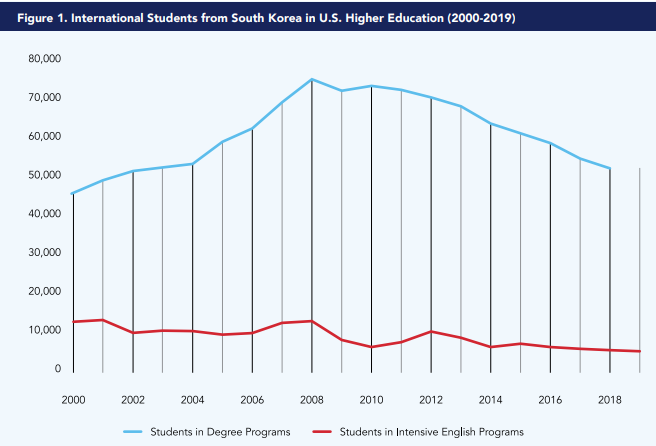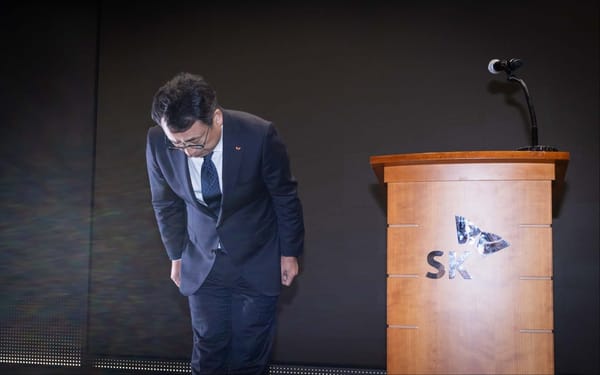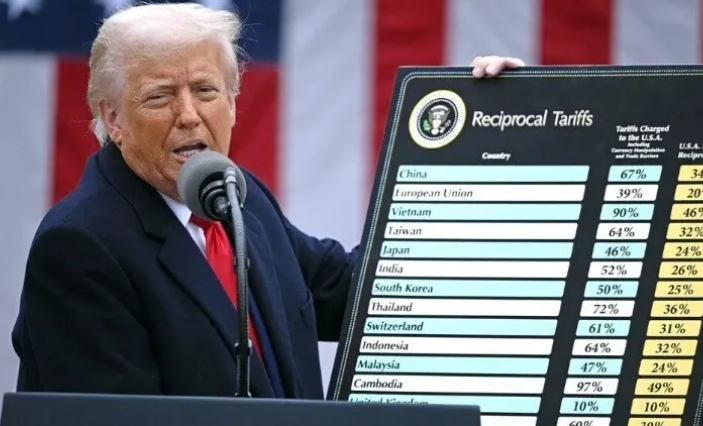Image: Year-to-year change in South Korean students studying in the United States. Credit: Korea Economic Institute.
Below is an op-ed contribution by the Korea Economic Institute in Washington DC. Through its publications and public events, KEI advances understanding of the Korean Peninsula for policy-makers and the American public. Sign up here to keep up to date on KEI's upcoming events.
Higher education is one of the most significant sectors of America’s service economy. In the 2018-19 academic year, 1.1 million international students in the U.S. higher education sector contributed $41 billion and supported more than 458,000 jobs. Worryingly, however, the number of international students studying in the United States have been steadily falling.
Dr. Stephanie Kim at Georgetown University believes that South Korean students serve as a good case study for understanding why fewer international degree-seekers are coming to the United States. Her study suggests that the decline is not solely attributable to the election of Donald Trump and the palpable increase in xenophobia in the United States. Rather, evidence suggests that the decline of enrollment reflects a larger shift in the international education industry. If the United States hopes to maintain this vaunted and privileged position, public policies that facilitate the arrival of more international students is critical.
South Korea is a major source of international students for the United States. Adjusted for population, South Korea contributes over three times more students to American campuses than China and over six times more students than India. Nonetheless, South Korean student enrollment in the United States has been on a steady decline since its peak in 2008 - eight years before Trump’s election in 2016.
Dr. Kim believes that South Korea’s demographic decline stemmed the flow of Korean students. With fewer native-born students filling domestic classrooms, the South Korean government has sought to attract international students to fill their spots by expanding English-language instruction and adopting curricula that resemble American universities’. These changes, according to Dr. Kim, have led to more South Korean students opting to stay at home rather than choosing to go abroad. After the launch of the government-sponsored Study Korea Project in 2004 that targeted international enrollment through English-mediated instruction and other initiatives, degree-seeking Korean students fell 30 percent between the 2008-09 academic year and 2018-19.
To be sure, there is more to the student exchanges than their economic value. They are an important component of how citizens of the United States and South Korea maintain an intimate people-to-people relationship. US policymakers should recognize the deeper consequences of the reversal in student mobility and pursue a course correction before more nations follow South Korea’s current trajectory. Dr. Kim presents three policy recommendations. First, US educational institutions should more proactively highlight different advantages of pursuing a degree in the United States that meet South Korean students’ evolving needs. For instance, cost-conscious students should be introduced to community colleges that are less expensive and still open the possibility for transfer to four-year colleges and universities.
Second, U.S. policymakers should ensure that the Optional Practical Training (OPT) visa - with its temporary employment period for international graduates from a U.S. degree program - remains a viable option. This would be particularly attractive to South Korean students who face a saturated job market at home and are searching for additional experiences that would bolster their resumes.
Finally, US policymakers should recognize that student exchange is a two-way flow and encourage American students to study in South Korea. Maintaining this human bridge ensures that Korean students will remain familiar with and continue to look to American institutions as their preferred destination for international degrees. Scholarship programs like the Fulbright Student Program and Boren Awards for International Study are great examples of how the United States can encourage student mobility between the two countries. Dr. Kim further encourages the targeted scholarship programs that fund underrepresented minority students to study in South Korea.








